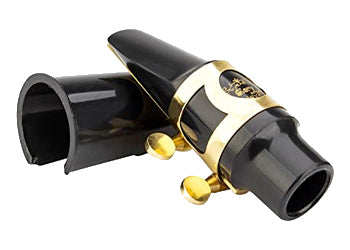
Hulp of advies nodig?
Vraag het een van onze Music All In experts. Je kunt ons een mailtje sturen of met ons appen.
Liever persoonlijk advies? Kom langs in onze experience store.
Buy a mouthpiece?If you are a novice player, choosing a mouthpiece is very difficult. Everyone blows in their own way. Fortunately, there are many different types of mouthpieces, but this also makes it a challenge to choose the right one. You can contact us for advice from our bladder specialists. They are happy to help you by testing together and choosing the right mouthpiece. We have new and second-hand mouthpieces in our store, so you can also contact us with a small budget.Read more... |
 |
Saxophone mouthpieces come in various materials such as plastic, ebonite and metal. These are the most common materials. But which one should you choose now? To start you can opt for plastic, it often speaks easily, but it does not do much for the sound. If you are looking for a fuller sound, ebonite is a better choice. A metal mouthpiece is often used in pop bands, in a harmony metal mouthpiece is not an option. But certainly for someone who is looking for a unique jazzy sound.
Also the brass wind instruments come in different materials. The most common are the metal mouthpieces. The base is brass, often with a silver-plated or gold-plated layer. If you are going to start playing the trumpet, a slightly smaller mouthpiece is recommended. The most chosen type is therefore the 7C. If you play on this for a while, you may grow to a different type, all this has to do with your embouchure.
The answer to this question is too often underestimated. Apart from the musician, a mouthpiece is the most important thing in a wind instrument. It is therefore very important that you buy a mouthpiece that suits you! The better your mouthpiece, the better it blows and certainly the fatter the sound. A properly playing mouthpiece can even lift a low quality instrument. This also works the other way around, if you have a good instrument and you put a poor quality mouthpiece on it, your sound will only deteriorate.

|
 |
 |
Nozzle: Here you blow up, you slide it on or in your wind instrument
Wind instrument: You blow this musical instrument, such as saxophone, clarinet, trumpet, trombone
Ebonite: This is the material commonly used in saxophone and clarinet mouthpieces
Metal: Metal mouthpieces are widely used by saxophonists
Plastic: You see this material a lot in study mouthpieces for both sax and clarinet
Ligature: A ligature is needed to hold the reed in place with a sax or clarinet
Gold plated: You also regularly see gold-plated mouthpieces with brass wind instruments
4C: Most popular plastic starter mouthpiece for clarinet and saxophone
C *: Most chosen ebonite mouthpiece for saxophone
Cup: The bowl you blow into with a brass wind instrument mouthpiece
Rim: This is the rim of a brass wind instrument mouthpiece
Boring: The width of the pin